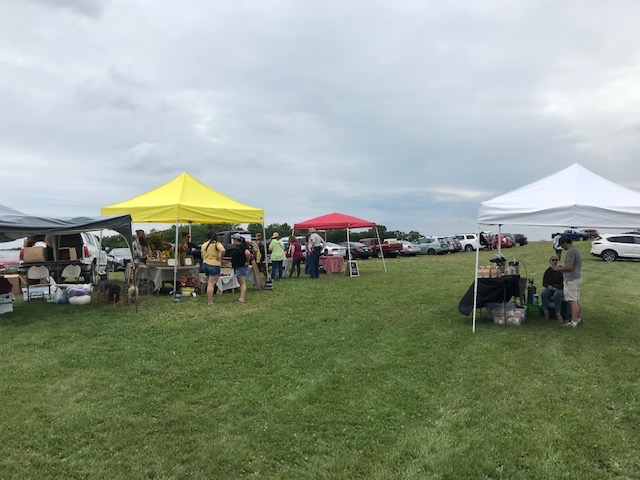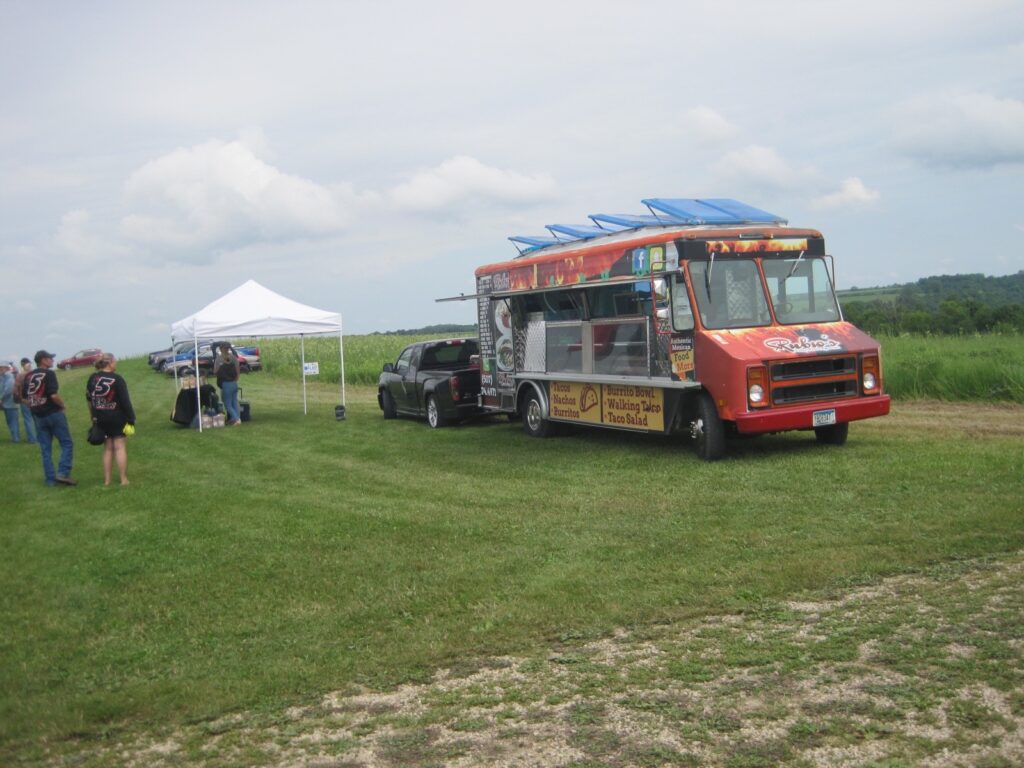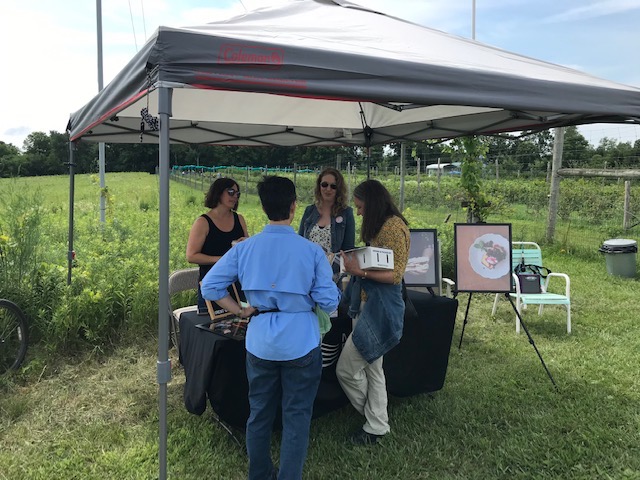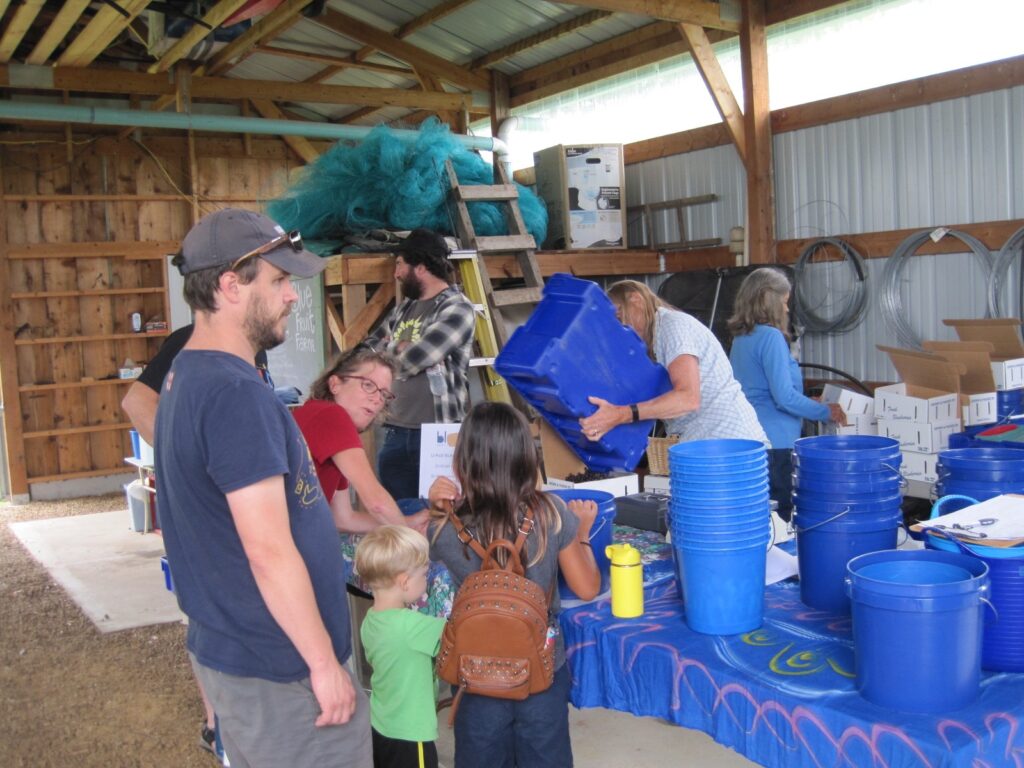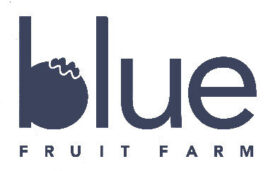Grant Report to Lakewinds Organic Field Fund
September 2, 2021
• Overall, how did this year go for your farm? What successes did you experience on your farm? What challenges did you face?
2021 has been a productive year, with some unusual ups and downs. In the fall of 2020, our farm manager decided not to continue with Blue Fruit Farm. So, we started 2021 with new farm managers, who knew very little about organic fruit production. Luckily, they are hard workers and quick learners, who had experience with gardening, food processing, and online marketing.
Our blueberry, aronia, and black currant harvests were strong in 2021, with our honeyberry crop below average due to dry conditions during fruit set, and our plum and juneberry crops being lost due to management challenges and learning curves. Our online marketing system has worked well, and we added more U-pick days. Our Co-op Farm Tour, combined with the Driftless Grown Vendor Fair, was a smashing success, attended by about 230 people! We were included in the Minnesota Farmers Union’s new book, “The Farmer and the Chef,” which led to some excellent publicity, such as a feature article about Blue Fruit Farm in Inspire(d) magazine.
• Were there any challenges or changes in markets for your farm specifically due to COVID? How has your farm business been affected (if at all) by the global pandemic? What changed for your farm as a result of COVID?
Due to Covid, we lost most of our restaurant sales in 2020, but have picked up new ones in 2021. We applied for and received a forgivable PPP loan, which helped pay salaries in 2021. We also strengthened our food safety plan, incorporating COVID guidance from the CDC and State of MN. By assigning harvest areas spaced apart, workers and U-pickers were able to harvest fruit safely. We also have a lot of people pick up fresh and frozen fruit directly at our farm with minimal contact, so no additional changes were needed.
• Describe your LOFF-funded project. Were you able to complete it as expected? Tell a bit about the process.
We received an LOFF grant to help pay for a new solar-powered laser system to deter birds from eating our fruits. We also received a grant from the USDA Sustainable Agriculture Research and Extension (SARE) program to help pay the remaining costs. We completed the project by installing the laser unit in late March, then running the laser system during the season.
• Were the funds used in the way you’d originally planned, as laid out in your LOFF application? If not, please explain.
The funds we received from LOFF and SARE were used exactly as planned. The funds paid for purchase and installation of the laser system, as well as installation of a solar panel and storage batteries to power the unit. The funds also helped cover the cost of holding a field day to show the unit to other growers and customers.
• Were there any delays, set-backs, or unexpected challenges in completing your project on time or on budget?
There were no delays in completing the project on time and within budget. The company supplying the unit had sent some incorrect mounting brackets, but we caught this in advance of our scheduled mounting day, and the correct brackets were on hand for the day when a company technician was on site to help install the unit and train us how to operate it.
• When was the project completed, and who helped you?
The laser unit and solar panel were installed on March 30, 2021. That concluded the physical part of the project. It was put into operation in early May, about 2 weeks before the honeyberries started to ripen. It was operated throughout the harvest season. We had a technician from the Bird Control Group on site for the installation. Otherwise, the unit has been operated by our farm manager, Ben McAvoy. Ben learned a lot about how to program, manage, and use the unit, and has plans for how the unit can be used more effectively in 2022.
• How has the completion of the project affected your farm?
Birds, especially robins and cedar waxwings, love to eat fruit! Over the years, we have used fake owls and hawks, sound devices, and overhead netting to protect our crops. The laser system adds one more tool to our toolbox. Thus far, it is not as effective as we expect it can be, and is being used in combination with netting and the Bird Guard sound unit. In the future, we hope that the laser unit alone will protect the crops, by starting the unit earlier in the season and running more targeted programs aimed at specific crops, well before they start to ripen. Use of the bird laser is limited in the month of July when we have workers in the field, so training the birds to stay away from the field the rest of the year will be helpful in maximizing the laser’s effectiveness. We also learned that juneberries serve as bird magnets, and since we only have 2 short rows of juneberries, we are likely to remove them to prevent them from attracting birds to our field.
• Do you have any quantitative data or other measurable outcomes related to the project, the impact it has had (or will have) on your farm?
Our field is divided into 2 units – East and West. When the birds started eating juneberries in the West unit, which is where most of our blueberry bushes are located, Ben realized that the laser unit alone was not sufficient to protect the fruit, and he organized a crew to install the overhead netting. He continued to run the laser, and the combination of laser and netting protected the blueberries in the West unit for our best yield ever – over 3400 lb. The netting was never pulled out on the East unit, and the rows of blueberries in the East unit suffered more fruit losses and damage from birds than the blueberries in the West unit. However, the blueberries in the East unit, which were protected only by the laser and sound systems, suffered less damage and loss than when protected solely by the sound unit in previous years.
• How have you (or will you) measure the success or impact of the project? What results can you share with us?
It is difficult to quantify the impacts of the laser unit, since there are many variables at play, including new farm managers, weather conditions, and the fact that our bushes keep getting bigger and more productive. We do know that our yields of blueberries improved significantly over 2020.
Actual Yields: Blueberries
2019 2689 lb
2020 2169 lb
2021 3421 lb
• What would you say to co-op shoppers about the importance of supporting local farms?
Buying from local farms is important for many reasons! A healthy local food system provides food security, since the food is grown in your region. By purchasing from local growers, you are investing in your community, as those dollars are re-circulated in the local economy. You are helping families stay in the farming profession. The food is fresher, and is likely to have more vitamins and minerals, since it is harvested at peak ripeness. Local producers grow varieties which are well adapted to the climate and are much tastier than fruits, vegetables, and other foods shipped in from a distance. You can often visit the farms and learn how they grow the food and take care of the land, water, and biological diversity, which we all need to survive on planet Earth!
• How can co-op shoppers better support small farms like yours today and in the future, and how can they engage with you (website, farmers markets, social media, other?)
Most importantly, co-op shoppers can purchase foods and other products from small, ecologically sustainable farms such as ours. These are businesses, and they need to sell products, in order to survive and thrive. Visit our website, www.bluefruitfarm.com and click on the “shop” button to purchase fruits, jams, and juices directly from us. Ask your co-op’s produce manager to stock our products. Ask your favorite chefs to purchase from local, small, certified organic farms like ours. Spread the word to friends, family and social media colleagues.


